Satellite Navigation - GBAS - News
Wednesday, November 27, 2024Ground Based Augmentation System (GBAS) - News
May 29, 2014 - Sydney Airport Commissions GBAS for Category I Service
The Ground Based Augmentation System (GBAS) at Sydney International Airport has been approved to provide precision approach and landing guidance to Category (CAT) I minima. Australia published Aeronautical Information Package (AIP) Supplement (SUP) H11/14 on May 29, 2014 that notes this approval.
More on Air Services Australia's plans for GBAS
May 5, 2014 - GBAS is Now Available for Use at Malaga-Costa del Sol Airport in Spain
Ground Based Augmentation System (GBAS) satellite navigation technology is now in operation at Malaga-Costa del Sol Airport in Spain. A ceremonial flight with Air Berlin was organized by navigation service provider Aeropuertos Españoles y Navegación Aérea (AENA) Air Navigation Directorate on May 5 to mark the start of the system's use for unrestricted commercial flight operations.
For more on this story, see the related article.
Joint press release from the Ministerio de Fomento and AENA.
November 21, 2013 - SESAR Tests ILS-for-GBAS Swap in Europe
In September, SESAR partnered with Honeywell, Airbus, Thales, DFS and Eurocontrol to carry out flight tests with a Dassault Falcon 900EX business jet using GBAS CAT II/III ground equipment (GASTD) at both Frankfurt and Toulouse. Full article
April 22, 2013 - Bush Intercontinental Airport Marks Arrival of Groundbreaking Technology to Increase Flight Capacity
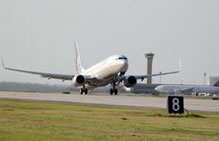
Houston's George Bush Intercontinental Airport (IAH) became fully operational with the first precision approach flown by a United Airlines aircraft using Honeywell's SmartPath Ground Based Augmentation System (GBAS) on Monday, April 22. IAH is one of two airports in the country participating in a pilot program, in partnership with the Federal Aviation Administration (FAA), United Airlines and Honeywell to demonstrate the use of GBAS. Full article
November 8, 2012 - United Cleared for Newark GBAS
The Ground Based Augmentation System (GBAS) at Newark Liberty International Airport has been given the green light, clearing the way for United Airlines to start regular passenger flights using its specially equipped Boeing 737-800 and 737-900 fleet. Full article
September 28, 2012 - First U.S. Ground Based Augmentation System (GBAS) Operational at Newark Airport
A milestone in the development of the Ground Based Augmentation System (GBAS) was reached on September 28, 2012 with the operational approval of the GBAS installed at Newark Liberty International Airport. Full article(PDF)
February 13, 2012 - Satellite-Based Precision Landing System Now Operational
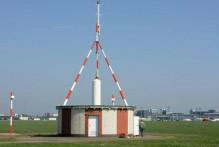
On 9th of February, the first fully operational GNSS Landing System (GLS) approach to CAT I decision height was made by an AirBerlin flight to Bremen airport in Germany; this marks the beginning of the operational use of satellite navigation (GNSS) for all phases of flight, including the most critical approach and automatic landing phases.
GLS is a precision approach operation using the ICAO-standard GBAS (Ground Based Augmentation System) components. It is the result of over 15 years of collaboration between multiple international partners. It is an alternative to the current precision approach standard, the instrument-based landing system (ILS). Full article
February 10, 2012 - Airberlin Starts Using Satellite-Based Precision Landing System for Regular Flight Operations
Following the German Federal Office for Air Traffic Control's accreditation of the ground station for the new satellite-based approach and landing system GBAS (Ground Based Augmentation System) as a primary landing system, airberlin will be the first airline in Europe to use satellite-based landings on regular flights at Bremen Airport. Full article
February 9, 2012 - Satellite-Based Landing System Certified - GBAS Debut at Bremen Airport
The satellite-based precision approach system GBAS (Ground Based Augmentation System) has received the German type certification as a primary landing system by the Federal Supervisory Authority for Air Navigation Services (BAF) and may be used independently of the instrument landing system (ILS) which has been is use for decades for instrument flights. Full article
Stay Informed
Subscribe to this page and be alerted when new News is posted. Click the Subscribe link under the menu bar above to sign up.
For more news, please be sure to check out the latest version of the SatNav News available online.
The Ground Based Augmentation System (GBAS) program is managed by the FAA Aviation NextGen and Operations Planning Service Unit (ANG-C32) at the FAA William J. Hughes Technical Center. More information can be found at http://laas.tc.faa.gov/



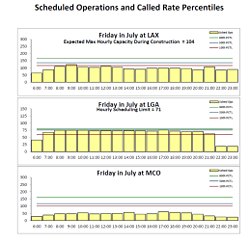
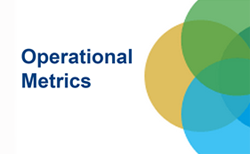
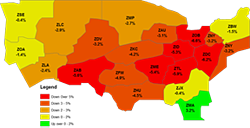

 The office provides support to ICAO groups tasked with improving the performance reporting capabilities to member states. This effort is largely done through the ICAO Air Navigation Bureau and the Planning and Implementation Regional Groups (PIRGS). ICAO guidance on performance is contained in ICAO document 9883 as well as the most recent publications of Global Air Navigation Plan.
The office provides support to ICAO groups tasked with improving the performance reporting capabilities to member states. This effort is largely done through the ICAO Air Navigation Bureau and the Planning and Implementation Regional Groups (PIRGS). ICAO guidance on performance is contained in ICAO document 9883 as well as the most recent publications of Global Air Navigation Plan. The office provides support to the CANSO Operational Performance Work Group which is part of the CANSO Operations Standing Committee. The work items produced include technical documents and workshop materials whose purpose is to improve the ability of ANSPs to use operational metrics to improve management of air traffic services. The guidance documents and workshops provide worked examples designed to ease implementation and reduce the cost of building capabilities for members. (
The office provides support to the CANSO Operational Performance Work Group which is part of the CANSO Operations Standing Committee. The work items produced include technical documents and workshop materials whose purpose is to improve the ability of ANSPs to use operational metrics to improve management of air traffic services. The guidance documents and workshops provide worked examples designed to ease implementation and reduce the cost of building capabilities for members. ( In February of 2013, the United States and the European Union signed a special Annex under a Memorandum of Cooperation (MOC) to collaborate on Air Traffic Management performance measurement. This MOC continues existing work with EUROCONTROL that has been producing
In February of 2013, the United States and the European Union signed a special Annex under a Memorandum of Cooperation (MOC) to collaborate on Air Traffic Management performance measurement. This MOC continues existing work with EUROCONTROL that has been producing 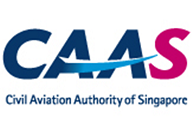 In September of 2013, the FAA and the Civil Aviation Authority of Singapore signed a MOC to collaborate on Air Traffic Management. The key elements of the MOC are to promote modernization and improve operational performance. Under the MOC, ATO Performance Analysis is working jointly with the Civil Aviation Authority of Singapore (CAAS) to develop and benchmark performance measures for surface operations and flight efficiency.
In September of 2013, the FAA and the Civil Aviation Authority of Singapore signed a MOC to collaborate on Air Traffic Management. The key elements of the MOC are to promote modernization and improve operational performance. Under the MOC, ATO Performance Analysis is working jointly with the Civil Aviation Authority of Singapore (CAAS) to develop and benchmark performance measures for surface operations and flight efficiency.